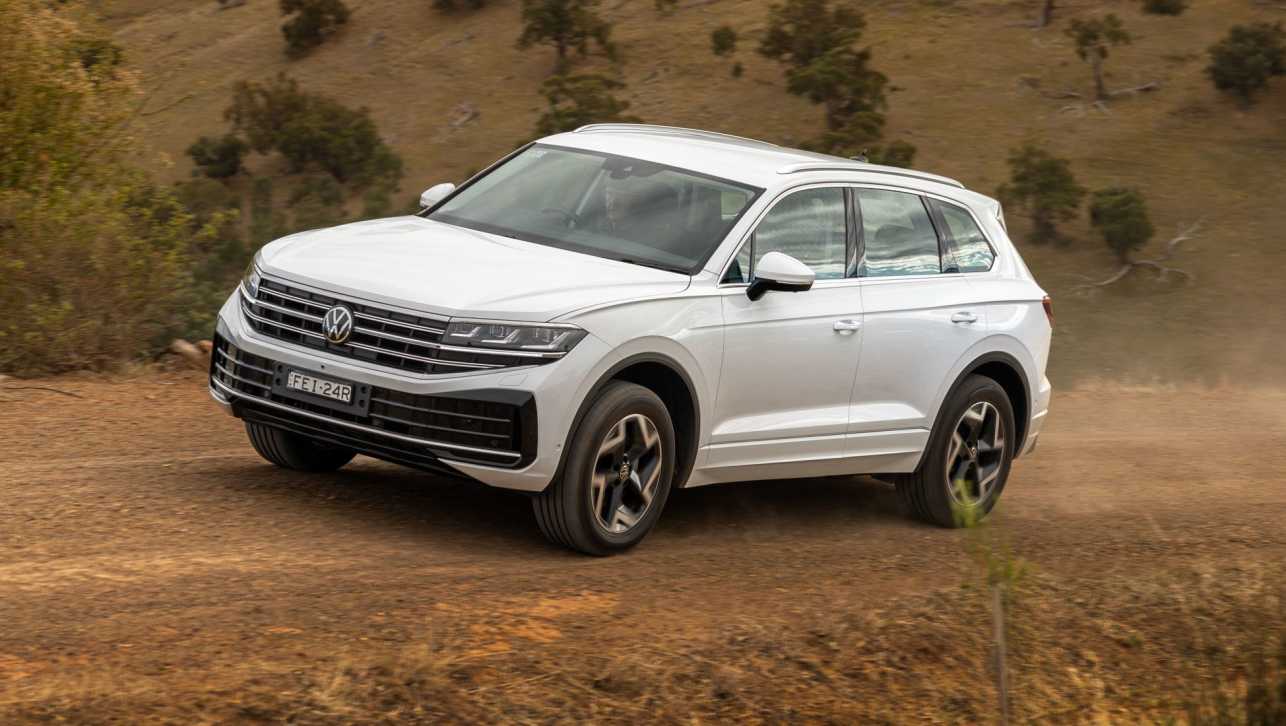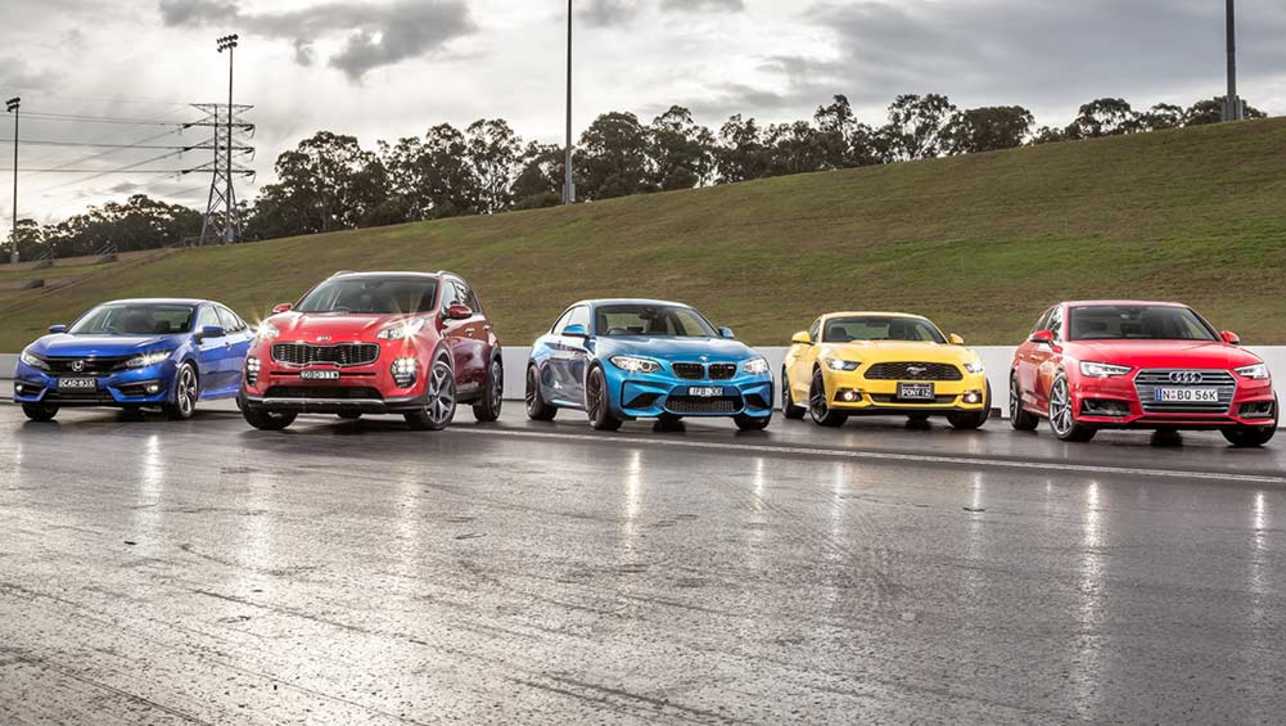The new year promises plenty of fresh metal in showrooms. We look at 10 key arrivals.
If you've resolved to buy a new car in 2016, these are the standout models among 50 new vehicles already confirmed to arrive in showrooms this year.
Small hatches and SUVs dominate the list, reflecting our continued obsession with compact and high-riding cars respectively. The intense competition in Australia means we're spoiled for choice and carmakers are reacting by lifting interior quality and features to lure buyers with more than just a price tag.
Truth be told, we're also becoming automotive snobs, as evidenced by the ever-rising proportion of top-spec models being sold and the growth of prestige brands outpacing mainstream marques. The good news is these cars are more likely to have standard active safety features … and the quicker new car buyers adopt the technology the sooner it will flow down into the secondhand market.
In no particular order, here is CarsGuide's top 10 list of key contenders in 2016.
Mazda CX-9

Ditching the thirsty V6 was a given for the upgraded seven-seat SUV but many wondered if Mazda would do a diesel version. The new 2.5-litre turbocharged four-cylinder engine renders the question moot by delivering diesel-like fuel economy and torque with the responsiveness of a petrol engine. Throttle response has been softened to smooth out short stop-start hops in peak-hour traffic and the steering ratio has been eased so the CX-9 now isn't quite as quick to turn the front wheels, both traits buyers of the big SUV should approve of. CarsGuide guestimates a price of around $42,000 when the Mazda arrives mid-year.
Toyota Prius

There's no little irony in the fact a lower, stiffer body will make the new Prius handle better than ever before … and be no quicker because the people who buy Priuses value fuel economy above all else. As a result power from the 1.8-litre petrol engine and electric motor has been substantially trimmed in search of better fuel numbers, rumoured to be as good as 3.2 litres/100km. We'll still make do with nickel metal hydride batteries, though, while US and Euro buyers will get lithium-ion packs. Interior upgrades extend from gloss white highlights throughout the cabin to an instrument cluster that has been shifted to the centre of the dash and angled towards the driver. Expect prices to start around $35,000 when it arrives in February.
Hyundai Elantra

It is a case of evolution rather than revolution for the new Elantra, despite a major overhaul inside and out. The car is longer and wider than the current model and adopts the corporate trapezoidal grille, yet the overall shape and panel creases are very similar. The engine is a carryover 2.0-litre four-cylinder and the interior quality has been lifted with classier materials. A reversing camera will be standard on all models in the range. Don't expect a dramatic jump in the existing $20,000 starting price when the new Elantra goes on sale early in the year.
Renault Megane

Quality plastics take on a new meaning with the Megane, which adopts plastic front guards and a tailgate to help cut weight. Renault has focused on improved quality to help the Megane stand out in the congested small car pack and top-spec versions will use an 8.7-inch touchscreen. Engine choices will include turbocharged 1.2-litre and 1.6-litre four-cylinder petrols and a 1.5-litre turbocharged diesel. The 1.6 will be reserved for the GT model, which bridges the performance gap between the regular cars and the sporty RS specials. Prices are expected to start close to the existing model's $21,000 mark when the new range arrives in September or October.
Volkswagen Tiguan

More boot space in the second-generation Tiguan addresses one of the main criticisms of the first model and should improve the car's prospects with small families. The small SUV is wider, longer and lighter than its predecessor. The expected equipment upgrades include autonomous emergency braking with pedestrian detection and lane-keeping assist. Expect to see the VW Group's 12.3-inch digital driver's display — first used in the Audi TT — on top-spec models. Touchscreen sizes range from five to eight inches. Due late this year, the Tiguan should start at $30,000 for the entry model.
Subaru Impreza

Expect to see more attention to styling and interior detail when the new Impreza arrives as the first model to use Subaru's modular platform. The concept car shown in Tokyo in October points to a more style-driven look intended to complement Subaru's safety reputation. The concept is shorter and wider than the current production car meaning the new model should have significantly better shoulder room without losing too much boot space. The engine is expected to be a revised version of the 2.0-litre four-cylinder unit. Subaru hopes to have the Impreza in by late 2016 and it should come with a low-$20,000 tag. The brand will also launch the Levorg, a high-performance wagon that should whet the appetites of those who remember the 2003 Liberty GT. It will arrive mid-year with a price just north of $40,000.
Kia Sportage

The fourth generation of Kia's popular mid-sized SUV has grown by 40mm and has a much more dramatic front end, highlighted by the four ice-cube styled daytime running lights sitting high at each corner. It shares its chassis with the Hyundai Tucson and overseas reports indicate that's no bad thing. The interior is typically austere but loaded with soft plastics in all the places occupants are likely to touch and an eight-inch touchscreen sits in the centre of the dash on top-spec models. The Sportage is due next month with prices predicted to start around $28,000.
Honda Civic

When a car is replaced three years after launch, there isn't much doubt it didn't do the job. The good news is the 10th-generation model looks and reportedly drives better than its predecessor. This car is a big deal for Honda and potentially for buyers as it will debut the company's first turbocharged engine, paired with a chassis Honda says is 25 per cent stiffer. Base models are expected to continue with the naturally aspirated 1.8-litre engine. The Civic was a staple of the small car sales mix and the Australian arm will be desperate to recover some of the lost ground. Expect prices to start shy of $20,000 before on-road costs when the Civic arrives mid-year.
Holden Astra

A UK-sourced five-door Astra will give Holden the ammunition to take aim at class leaders like the Mazda3. The top-spec cars are fitted with high-tech features including autonomous emergency braking, auto-dimming high-beam headlights and a massage seat for the driver. The turbocharged 1.6-litre engine proved the pick of the engines tested at its international launch and is already doing duty in the three-door Astra on sale here. Transmissions will be six-speed manuals and autos. Australians bought 235,000 European-built Astras from 1996-2009 and Holden needs this model to emulate that success. Prices are expected to start around $22,000 when the Astra goes on sale late this year.
Ford Focus RS
-w.jpg)
The cult-following for the go-fast Focus is likely to become mainstream mania when the new model arrives. Power from the 2.3-litre turbo engine exceeds that of the Golf R and WRX STi, making this one of the bang for your buck specials of the year. To tame the 257kW/440Nm Ford has switched from front-wheel to all-wheel drive. It is also the first time the RS will be sold as a regular production model rather than a limited edition special. Software-based party tricks include torque vectoring (where power is shifted to the wheels with the most grip through corners) and a "drift mode". The speedy Ford hatch is due mid-year starting at $50,990.




.jpg)
.jpg)



.jpg)





.jpg)
.jpg)



.jpg)



.jpg)
.jpg)





Comments